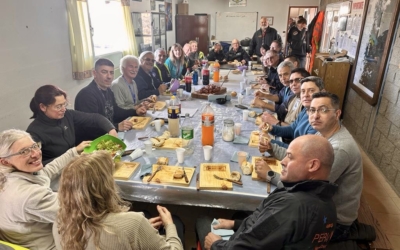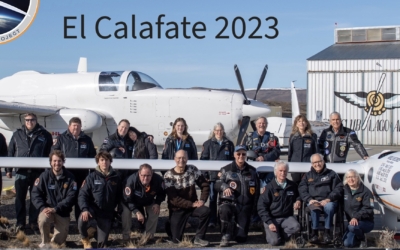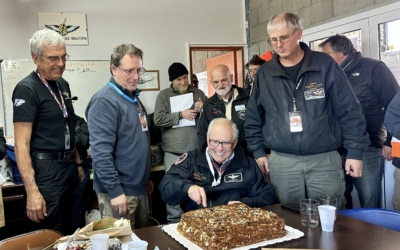
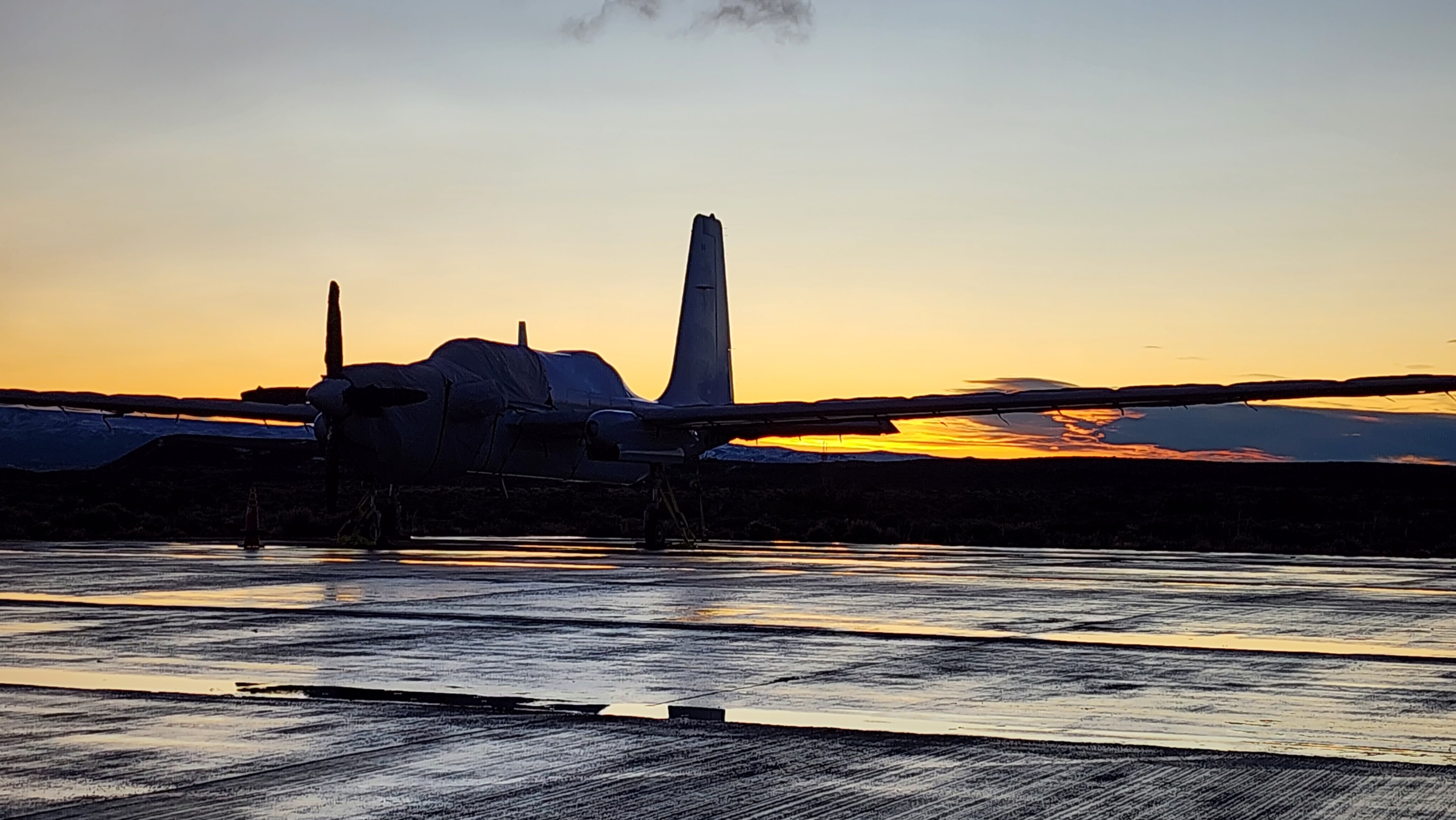 For Airbus Perlan Mission II, the Egrett team makes it possible to soar to record heights. The Perlan Project was organized to investigate stratospheric waves above 35,000 feet. Below that altitude, the tropospheric wave has been much more explored and understood. Only Einar and Jim have ever soared through the tropopause (the boundary layer between the two atmospheric layers around 35,000 feet, depending on conditions) because it is very, very difficult to do. The tropopause was above Bob Harris’ record flight prior to Einar breaking that record by soaring through the tropopause in 2006 for the first time in Perlan I.
For Airbus Perlan Mission II, the Egrett team makes it possible to soar to record heights. The Perlan Project was organized to investigate stratospheric waves above 35,000 feet. Below that altitude, the tropospheric wave has been much more explored and understood. Only Einar and Jim have ever soared through the tropopause (the boundary layer between the two atmospheric layers around 35,000 feet, depending on conditions) because it is very, very difficult to do. The tropopause was above Bob Harris’ record flight prior to Einar breaking that record by soaring through the tropopause in 2006 for the first time in Perlan I.
Many have wondered how we ever got the Egrett to tow the Perlan glider. That was a match made in heaven! During a conference call with the 4 Perlan team pilots in January 2018, they were brainstorming on how to tow through the tropopause consistently, and Jim said, “What we need is Einar’s Egrett!” (Einar had been a test pilot at Grob in Germany). Independently, during the previous week, Arne and Roberta Vasenden, who founded AV Experts, LLC, had heard about the Perlan Project and had remarked how they should reach out to the Perlan team. When Jim called Arne, it was truly a moment of synchronicity! By May, through the cooperation of AV Experts and Perlan’s Mike Malis, a tow system was incorporated on the Egrett and certified for use. Jim and Miguel did the first glider tow using the Egrett to tow a Grob 103 sailplane in Texas at the end of May, and Jim and Roberta did the second flight on the same day. Tim flew photo chase for those flights. The concept was proven…it WAS possible to tow behind the Egrett safely! For a blog about that see https://perlanproject.org/first-ever-tow-egrett/
The Egrett’s stratospheric tows are a game-changer for Perlan flights. In 2018, the Egrett towed Perlan into the skies above the Andes.
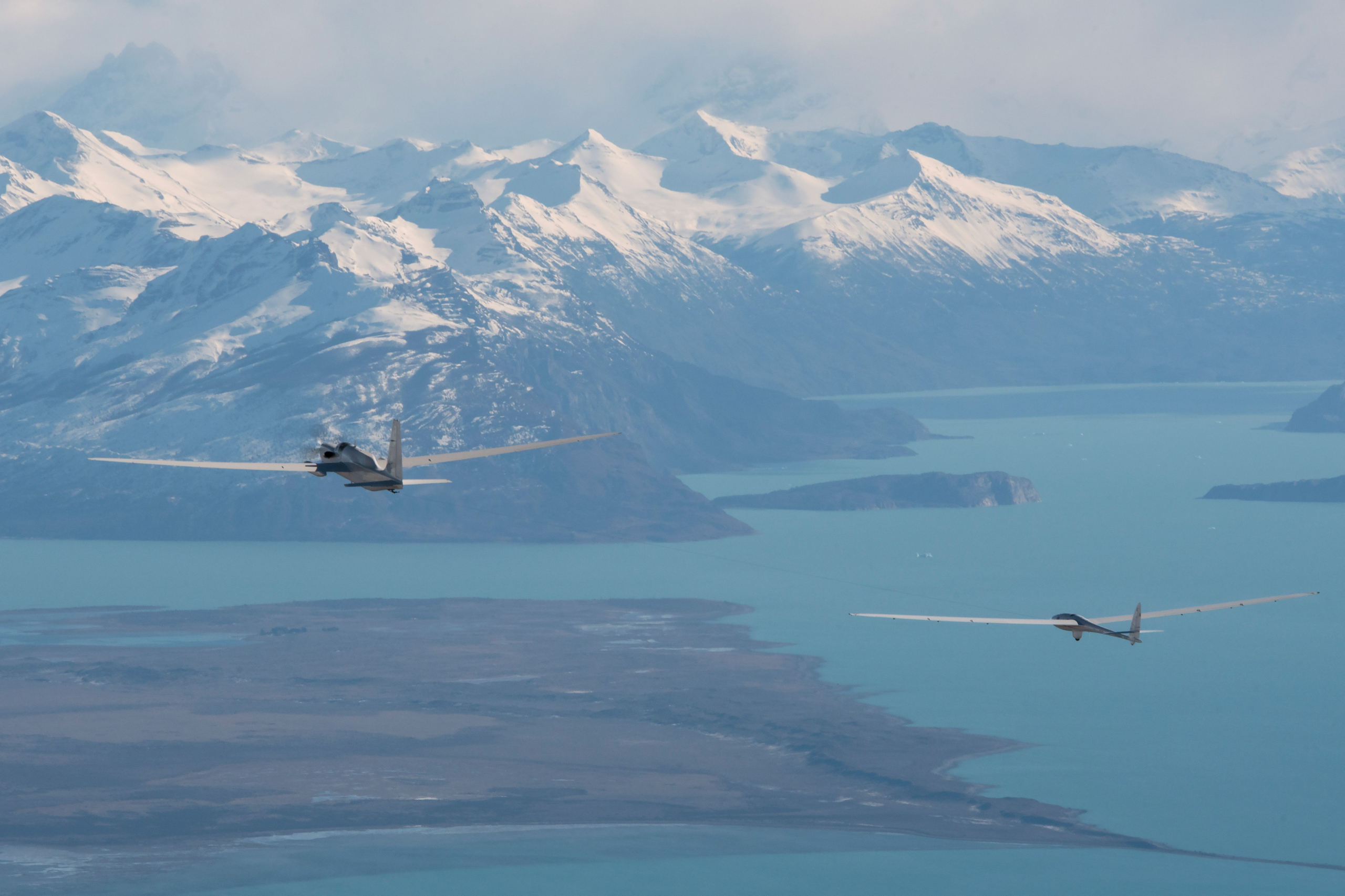
Perlan set three world altitude records culminating in 76,124 feet pressure altitude. On another flight, the Egrett towed the Perlan to a never-before tow release altitude of 47,100 feet, setting a record for the world’s highest tow. The previous record high tow was done by NASA during its F-106 demonstration which was to 25,000 feet. For a 2018 blog with flight video showing Egrett’s contrail while towing Perlan 2 see https://perlanproject.org/test-tows-perlan-2-egrett/
The Grob G-520 Egrett is a powerful, pressurized, single-pilot, turboprop aircraft uniquely capable of flying from 70-250 knots. It has a Garrett TPE-331-14 engine. It ferries from Texas to Argentina over a period of a week at around 250 kts.


On this year’s ferry trip south Arne incorporated some inspirational time in Mendoza. There were about 400 students who came to the hangar to see the mighty Egrett.
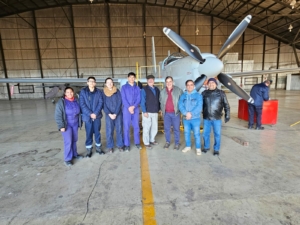
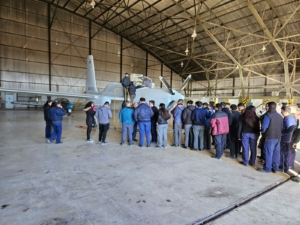
However, for towing, an airspeed of 70 kts is the speed that the 2,000 pound Perlan 2 likes. The Egrett has so much power that it does not use full throttle for the takeoff portion of the tow. If you watch closely you can see how quickly the heavy Perlan 2 gets airborne. There’s usually a little wing dance as the Perlan wing encounters the unavoidable turbo prop wash.
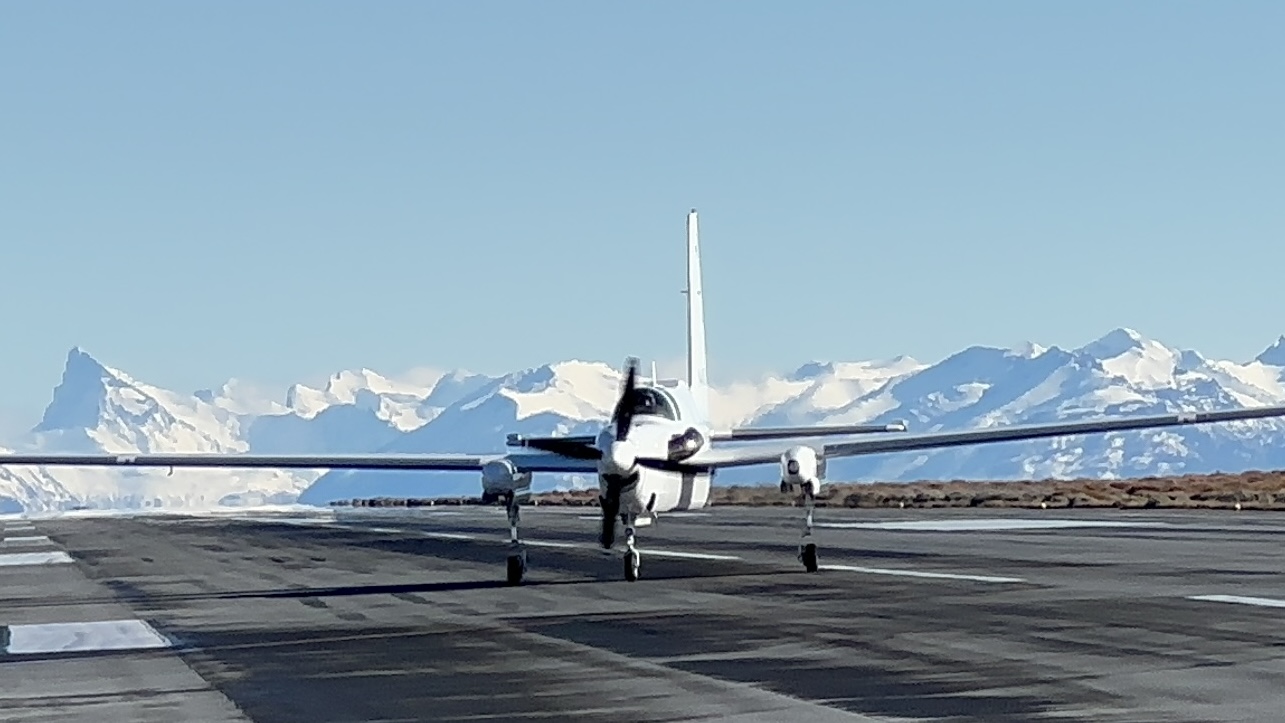
Arne waits until well clear of the ground before adding more power. And when he does, they climb like homesick angels! Around 25,000′ the contrail forms behind the Egrett. Jim manuevers the Perlan to be above the contrail. It takes about one hour to reach 40,000 feet. Getting high so quickly conserves the battery life and air supply of the Perlan glider so we have time to safely explore the stratospheric wave.
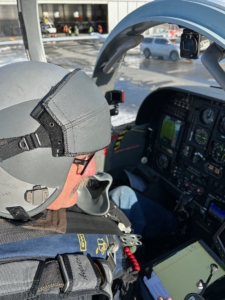 What’s it like to pilot all of this horsepower? As Arne says, “I really don’t have a lot of time to look around during the tow. I hand-fly the Egrett the entire time, constantly feeling the glider behind me, and I’m searching for wave while we are flying together. We explore the atmosphere in real-time, and I pull them into an area where the team believes they have the best chance of success to soar.” Jim then gives the call, and the two airplanes separate: the Perlan soars up into the stratosphere, and the Egrett returns to the airport with Arne calling out wave lift and sink to the team even as he returns.
What’s it like to pilot all of this horsepower? As Arne says, “I really don’t have a lot of time to look around during the tow. I hand-fly the Egrett the entire time, constantly feeling the glider behind me, and I’m searching for wave while we are flying together. We explore the atmosphere in real-time, and I pull them into an area where the team believes they have the best chance of success to soar.” Jim then gives the call, and the two airplanes separate: the Perlan soars up into the stratosphere, and the Egrett returns to the airport with Arne calling out wave lift and sink to the team even as he returns.
In addition to the towing efforts, each year AV Experts has become more involved and supportive of the larger Perlan mission. Roberta is eloquent, as well as scientific, about her specialty of atmospheric research. There are several new features that the Egrett supports this year – student CubeSats (a dedicated blog will provide more information on these in the coming weeks) and the Thales in-flight communication.
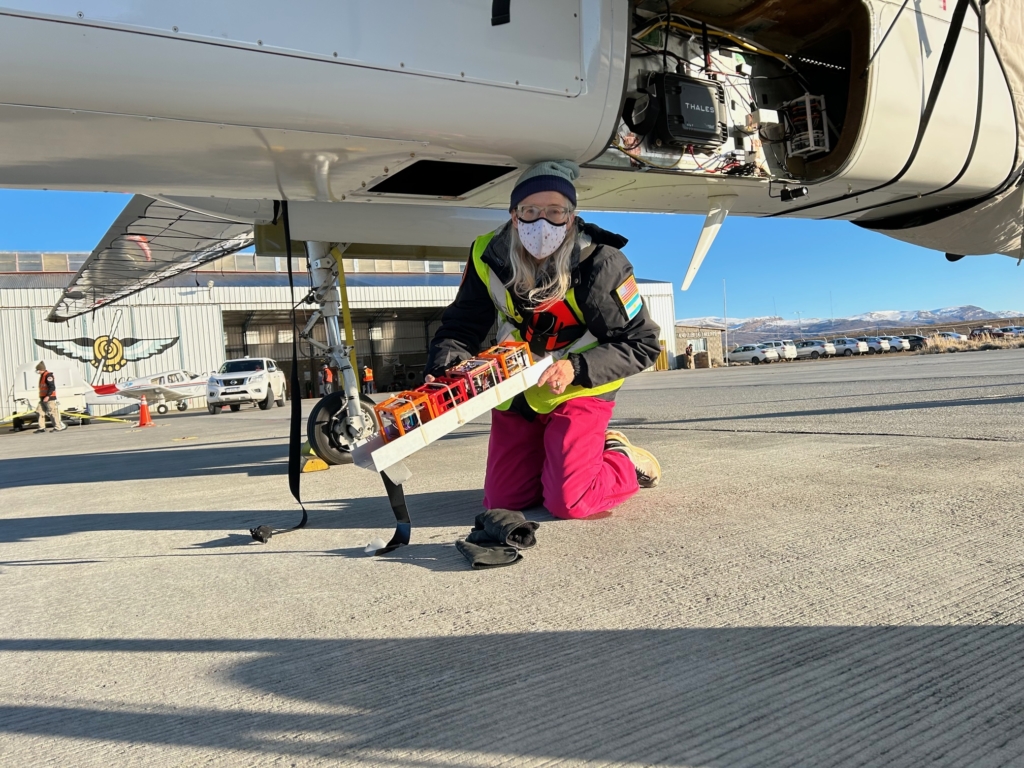 “We are excited to help promote education and these student projects,” states Roberta. “We have modified the Egrett to accept these experiments and agreed to fly the CubeSats during our ferry flights down and back to Argentina, all the while collecting long-term data, taking pictures, and conducting interviews so that students can see real science taking place.
“We are excited to help promote education and these student projects,” states Roberta. “We have modified the Egrett to accept these experiments and agreed to fly the CubeSats during our ferry flights down and back to Argentina, all the while collecting long-term data, taking pictures, and conducting interviews so that students can see real science taking place.
Additionally, during each flight of the Perlan, the Egrett will also be flying any of the CubeSats that do not make it onto the Perlan glider. Finally, the intern that will care for all of these CubeSats is one of our very own, a student herself, Elisa Vasenden.” Elisa is the daughter of Arne and Roberta, and she has been a member of the Perlan/Egrett team since she was 12 years old. This is her third Perlan campaign, and she is now a senior in high school.
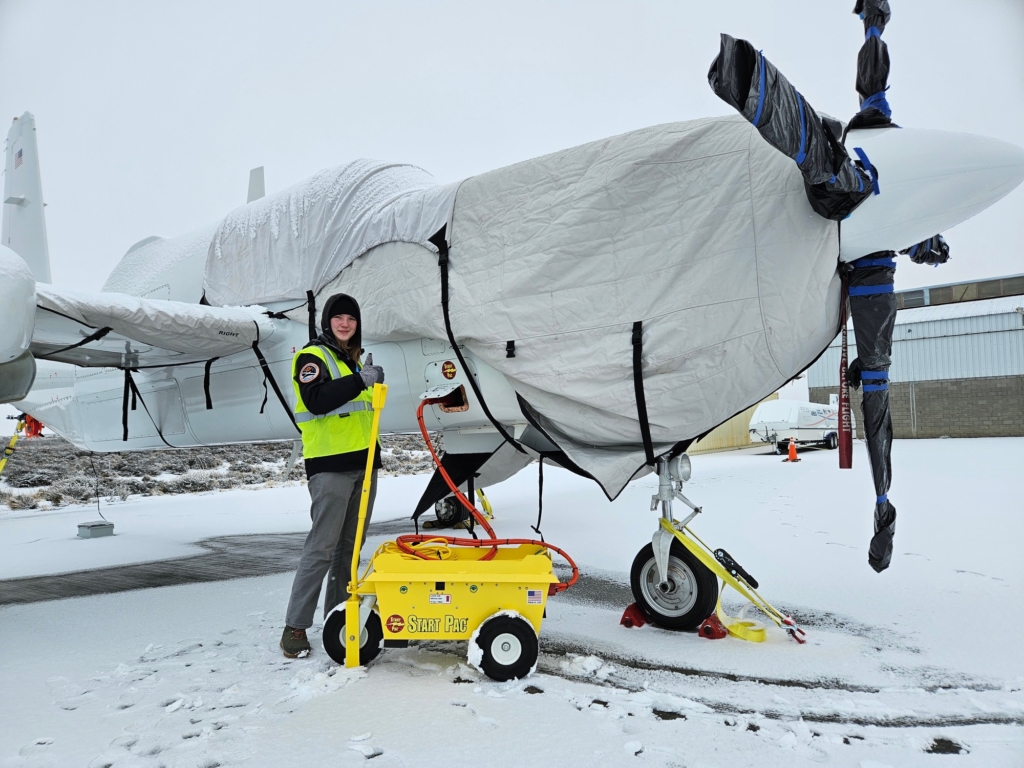 Elisa helps prepare the Egrett before each flight, then selects, prepares, and loads and unloads each CubeSat into the Perlan glider or the Egrett. She also helps launch the weather balloons that are critical to understanding the upper atmosphere and validating our atmospheric models. On mission days, Elisa is quite busy, moving from task to task wherever needed, including on the flight line. After the Egrett and glider are recovered, Elisa is in charge of downloading all of the data captured by the CubeSats. “I am happy that I can be a part of this international scientific team. I love exploring and am glad that I can show kids around the world that you are never too young to make a difference.”
Elisa helps prepare the Egrett before each flight, then selects, prepares, and loads and unloads each CubeSat into the Perlan glider or the Egrett. She also helps launch the weather balloons that are critical to understanding the upper atmosphere and validating our atmospheric models. On mission days, Elisa is quite busy, moving from task to task wherever needed, including on the flight line. After the Egrett and glider are recovered, Elisa is in charge of downloading all of the data captured by the CubeSats. “I am happy that I can be a part of this international scientific team. I love exploring and am glad that I can show kids around the world that you are never too young to make a difference.”
The Egrett is also hosting the new Thales communication system which was first tested on the Egrett in 2022. Michael Batalia led the charge to fly it first on the Egrett to test, and now we are testing it on the Perlan 2 (this is another exciting blog topic very soon). Roberta continues, “Also new this year to the Egrett is a data link system which will allow the Egrett to host one of the world’s highest internet hotspots. The Egrett tow plane will link the Perlan glider with the ground as the glider livestreams video from the Perlan, providing a view into the stratosphere that has never been possible previously. This technology will also allow the pilots to remain in contact with the ground to receive up-to-the-minute forecasts which will help them strategize their flight.” The Egrett will also be able to stream live video from its position, high above the earth, providing feedback both during the towing procedure and afterwards.
Yes, the Egrett is more than just a tow plane…it is the world’s highest flying tow plane, conducting scientific research and hosting one of the world’s highest airborne hotspots. As members of the Egrett team are fond of saying, “It has the motor to tow through the rotor, and so much more!” Thank you, Team Egrett, for helping launch the Perlan 2 glider into the stratosphere. Together Perlan and Egrett soar high!
Roberta describes a flight day in El Calafate:
Many people ask me about the Egrett, a unique airplane built for a unique purpose. It is an amazing machine which we are blessed to have and be the caretakers of since 2012. To give you some insight into how we operate it in El Calafate, let me take you through a day in the life of my job as the Egrett Crew Chief. In this role, I am responsible for the Egrett aircraft while it is on the ground. This includes routine inspections, tow rope readiness, CubeSat installations, Thales connectivity, and ensuring mission critical items like fuel, hydraulic fluid, aviator’s breathing oxygen, liquid oxygen, and nitrogen are all aboard prior to our launch. I am in constant contact with my teammates who work on the Perlan, including Jackie Payne, who is my counterpart for the glider, to ensure we are aware of each other’s aircraft readiness. I also attend the CapCom readiness briefing held about 3 hours prior to the push-out of the glider on each launch day. This meeting helps determine if the entire team is ready to go or if we need to hold for any critical item. After the briefing, I upload the most recent version of the SkySight atmospheric model we will use in the cockpit iPads, along with updating the cockpit and handheld GPSs with the planned route of flight. I then oversee and assist with the removal of the Egrett’s wing, cockpit, and tail covers, an operation that takes a team of at least 4-6 people to accomplish even in calm winds! Once the Perlan glider is pushed out, I focus on the pilot, who is my husband, Arne, and ensure that he has everything he needs for the flight. This includes assisting him in gathering and donning his emergency and protective gear: a specialized high-altitude parachute with its own emergency oxygen supply, life vest, satellite phone, Garmin InReach, and helmet with pressure-demand oxygen mask. I also make sure we have loaded his emergency life raft and emergency egress bag, which contains supplies that would assist him if he needed to leave the aircraft during an emergency. When the time comes for him to get into the cockpit, I make sure we have gone through the checklists and armed the parachute’s automatic opening device, connected the oxygen supply to his mask, hooked his helmet into the audio panel of the aircraft, and help him secure his seat harness. I also serve as his runner in case he needs something before he begins taxiing. During this time, I monitor the CapCom radio transmissions, as well, to remain aware of what is happening with the glider, and I prepare the aircraft for engine start by attaching the StartPac ground power cart to a special plug on the aircraft’s side. As mentioned above, I am in charge of the payload, which includes the student CubeSats (which Elisa loads for us) and the Thales unit. The latter is used to livestream video back to the ground, serve as an internet hotspot for the glider, and enables the pilot to send text messages to the ground while in flight. These systems need to be turned on and readied for each mission, which is what I do after the pilot is in the cockpit but just before engine start. Once the glider has towed past us and is headed to the runway, Arne closes the canopy of the Egrett, and I ensure the area is safe for engine start. Once started, I wait for Arne to tell me to remove the start cart from the aircraft, and then I marshall him safely out of his parking spot to begin taxiing to meet up with the Perlan glider at the end of the runway. It’s a sight to see as the Egrett taxis by! Its engine is nearly deafening, and its prop wash is quite powerful as it moves past me for its flight with destiny! Once the airplanes take off, I move into CapCom to monitor the flight, providing assistance as needed with anything that concerns the tow plane or pilot communications with the Egrett. After the Perlan glider is released from the Egrett, I prepare to recover the aircraft and bring it back to its parking spot on the ramp. It takes a team of people to push the aircraft back into its parking spot and reattach the aircraft’s wing and canopy covers once the engine shuts down. Especially during times like these, I am keenly aware of how much teamwork is involved in our operation. It almost feels like we are sailing an America’s Cup sailboat, with each person focused on his or her own task but each task absolutely essential to the overall operation of the ship. Our aircraft is no different, and I am so grateful to all of my Perlan teammates for making our flights possible. We would be no where without a dedicated team of professionals standing beside us each day, making us look good and our operation a success. A special thanks goes out to Paul Richards, our Director of Maintenance, and Josh Moore, who assists him at our base in Texas, as well as Mike Malis, our Perlan teammate who ensures the tow rope is ready at all times.
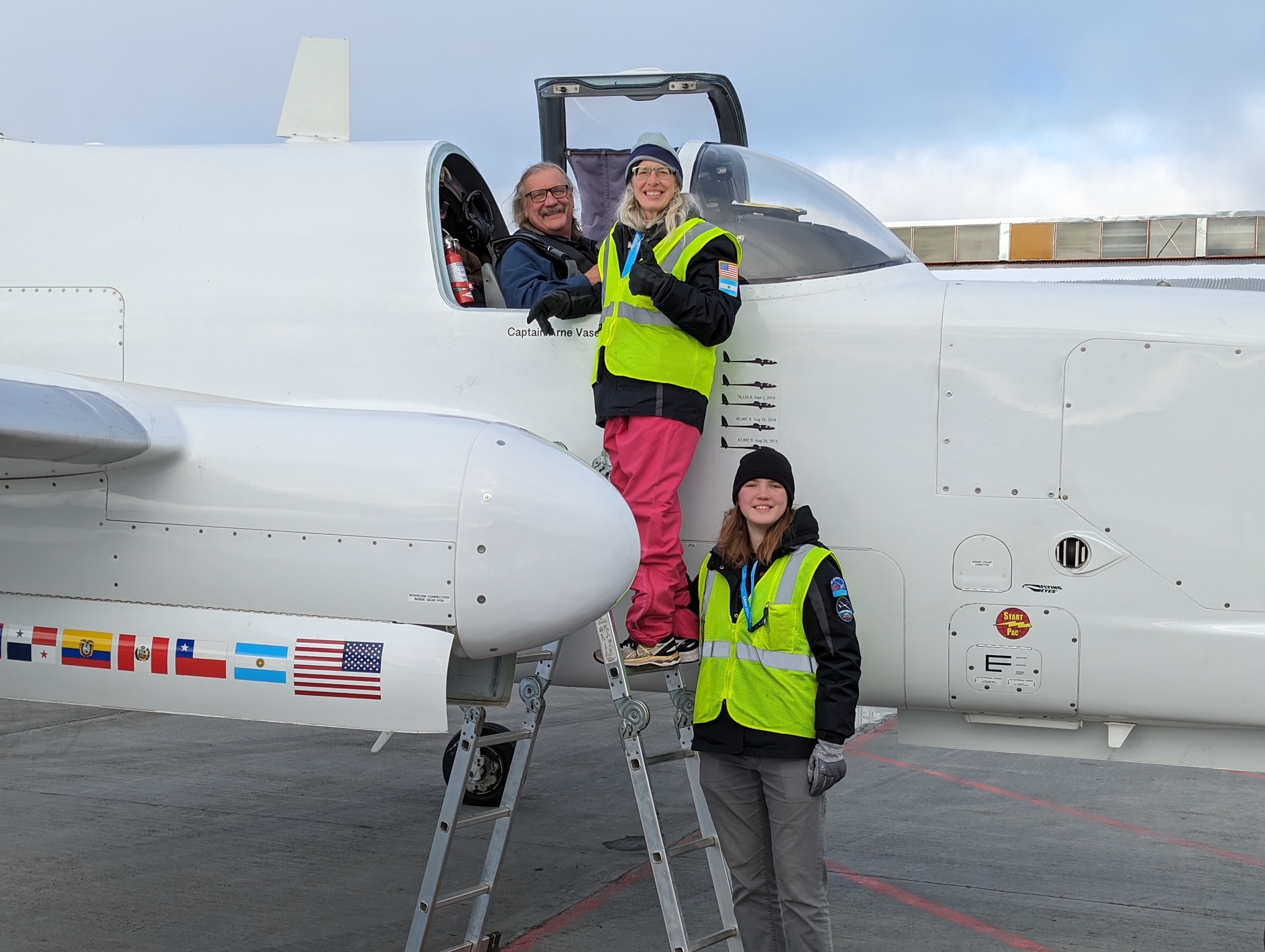 Thank you Arne, Roberta and Elisa Vasenden. Team Egrett makes it possible for Perlan to Soar High! Jackie
Thank you Arne, Roberta and Elisa Vasenden. Team Egrett makes it possible for Perlan to Soar High! Jackie

